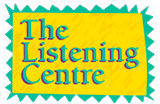Martha Mack, a psychologist, and her husband George run the Listen and Learn Centre in Melbourne, Australia. The Centre offers an Auditory Training program similar to the Listening Training we offer at The Listening Centre and Neurofeedback. This puts Martha in a unique position to answer a question that we are often asked: when is Listening Training recommended, and when is Neurofeedback recommended?
There are different kinds of therapy that may benefit people with ADHD. These include listening therapy, covered on our website, and neurofeedback (NFB), whereby EEG brainwaves are modified through conditioning training to increase focus and concentration. Depending on the complexity of the case, the best results often come when listening therapy is undertaken before NFB. Why is this true?
Listening therapy stimulates lower, more basic levels of the brain, while ADHD symptoms of inattention, impulsivity and hyperactivity, seem to be controlled in higher levels of the brain, specifically the frontal cortex. It is notable, however, that ADHD has many issues that tend to occur simultaneously which combine to give these three above-mentioned symptoms. These issues may originate from problems in more basic levels of the brain. The lower down the issue is with regard to its position in the brain, the more profound it tends to be. So, it is important then to evaluate whether ADHD symptoms are originating from a bottom-up (brain-stem to cortex) or a top-down (cortex to brainstem) direction. Is a brain maturation deficit the only issue affecting the ADHD child, or are there more issues at play?
Neurofeedback impacts the reticular activating system (RAS) via sensory motor rhythm entrainment – a top-down process impacting sleep spindles and the ‘quietening’ of the motor system. However, during listening therapy, the auditory pathways and the vestibular system are specifically stimulated. Because the auditory nerve is one of the first to form during gestation, it is directly connected to the brainstem, the RAS in a bottom-up direction. This means that the auditory nerve is central to the development of a child – and consequently, a direct pathway to stimulate the more basic levels of the brain. Auditory processing begins at a primal level of development, while executive functions (compromised in ADHD) are part of the higher-level development of the brain, a process that appears to continue to the age of approximately 30.
Therefore, if ADHD symptoms are not the only concern (e.g. sensory processing difficulties), listening training may be indicated to address the deficits that impact the RAS prior to NFB. Stimulating the more basic levels of the brain through listening training, resolving those issues first, and then working up toward stimulating the frontal cortex during neurofeedback appears to be the most effective way to progress treatment. Therefore, listening therapy should always be considered when addressing ADHD.
 Skip Navigation
Skip Navigation